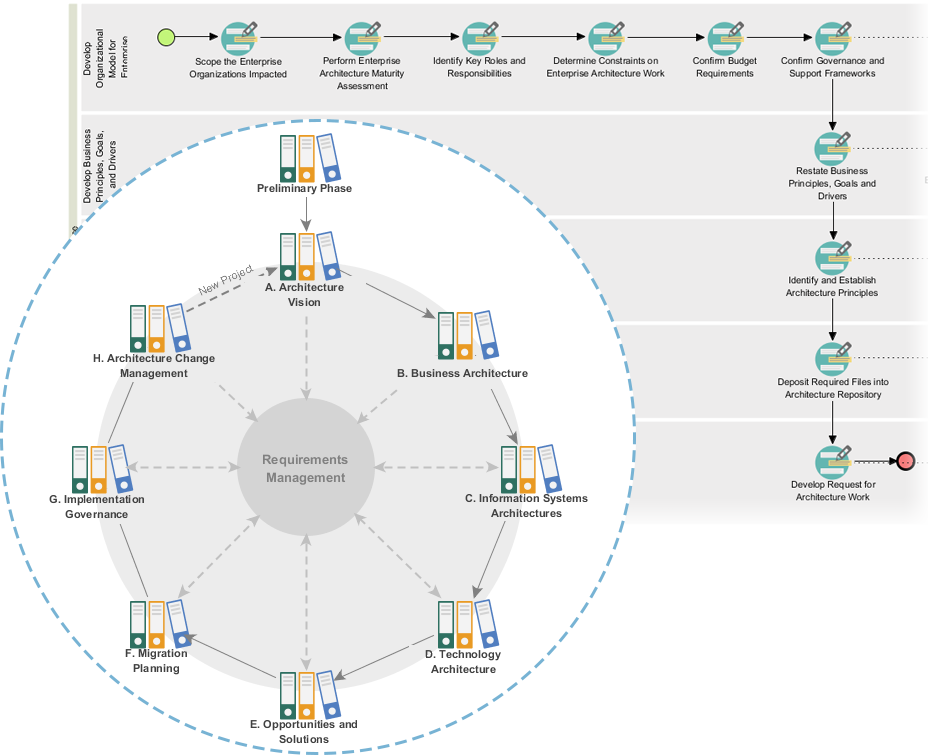Overcoming Challenges: The Key to Successful Enterprise Architecture
Embarking on an Enterprise Architecture (EA) project is a complex and multifaceted endeavor, often fraught with a myriad of challenges that can impede progress and undermine the overall success of the initiative. Before organizations can fully leverage the benefits of a robust EA framework like TOGAF, they must first overcome several critical barriers:
-
High Upfront Investment:
Implementing an EA program can be resource-intensive, requiring substantial upfront investments in training, tools, and additional personnel. This financial burden can be a significant deterrent for many organizations, especially those operating with limited budgets or tight timelines. -
Skill Gaps:
Effective EA implementation requires a diverse set of skills, including technical expertise, business acumen, and strategic planning capabilities. Lacking these crucial competencies can severely hamper the initiation and execution of EA projects, leading to suboptimal outcomes. -
Misalignment with Business Goals:
All too often, EA initiatives are viewed as purely technical exercises, disconnected from the overarching business objectives of the organization. This disconnect can result in IT deliverables that fail to address the pressing needs of the business, leading to frustration and a lack of stakeholder buy-in. -
Ad-Hoc Initiatives:
In the absence of a cohesive, standardized approach to EA, organizations may find themselves mired in a chaotic web of isolated, uncoordinated initiatives, each with its own set of guidelines and procedures. This lack of consistency can undermine the overall effectiveness of the EA program. -
Tedious Requirements:
The creation and maintenance of EA deliverables, such as architectural models, process diagrams, and requirements documentation, can be a time-consuming and arduous task, diverting valuable resources away from more strategic initiatives.
Visual Paradigm’s TOGAF ADM Guide-Through Process offers a comprehensive solution to these common challenges, empowering organizations to overcome these barriers and embark on their EA journey with confidence and efficiency.

By providing a streamlined, step-by-step guide through the TOGAF Architecture Development Method (ADM), Visual Paradigm’s tool eliminates the need for extensive upfront investments and skill development. The guided process, coupled with real-world samples and input references, ensures that both novice and experienced teams can navigate the EA landscape with ease.
Moreover, the tool’s seamless integration with the TOGAF framework and ArchiMate 3 modeling language helps to bridge the gap between technology and business, enabling organizations to align their IT initiatives with their strategic objectives. The collaborative features further enhance cross-functional alignment, ensuring that all stakeholders, from project owners to IT professionals, are engaged and aligned throughout the EA development process.
Finally, Visual Paradigm’s TOGAF ADM Guide-Through Process simplifies the creation and management of EA deliverables, automating the documentation process and reducing the administrative burden on the team. This efficiency, in turn, allows organizations to focus their resources on the more strategic aspects of the EA program, driving tangible business outcomes.
By addressing these critical challenges head-on, Visual Paradigm’s TOGAF ADM Guide-Through Process empowers organizations to overcome the barriers to successful EA implementation, paving the way for a more streamlined, collaborative, and goal-oriented approach to enterprise architecture.

